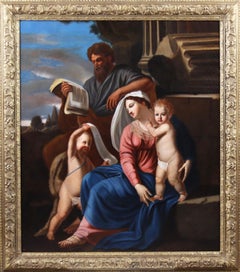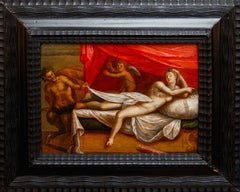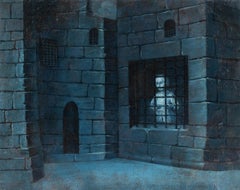18th Century and Earlier Figurative Paintings
Naturalistic 18th Century and Earlier Figurative Paintings
Canvas, Oil
Old Masters 18th Century and Earlier Figurative Paintings
Oil
Baroque 18th Century and Earlier Figurative Paintings
Oil
Other Art Style 18th Century and Earlier Figurative Paintings
Canvas, Oil
Rococo 18th Century and Earlier Figurative Paintings
Canvas, Oil
Old Masters 18th Century and Earlier Figurative Paintings
Oil
Realist 18th Century and Earlier Figurative Paintings
Oil, Panel
Other Art Style 18th Century and Earlier Figurative Paintings
Oil
Other Art Style 18th Century and Earlier Figurative Paintings
Oil
Baroque 18th Century and Earlier Figurative Paintings
Oil, Canvas
Old Masters 18th Century and Earlier Figurative Paintings
Oil
18th Century and Earlier Figurative Paintings
Canvas, Oil
Modern 18th Century and Earlier Figurative Paintings
Oil, Canvas
Old Masters 18th Century and Earlier Figurative Paintings
Oil
Rococo 18th Century and Earlier Figurative Paintings
Canvas, Oil
Old Masters 18th Century and Earlier Figurative Paintings
Canvas, Oil
Old Masters 18th Century and Earlier Figurative Paintings
Marble
Old Masters 18th Century and Earlier Figurative Paintings
Canvas, Oil
Old Masters 18th Century and Earlier Figurative Paintings
Oil
Modern 18th Century and Earlier Figurative Paintings
Canvas, Oil
18th Century and Earlier Figurative Paintings
Canvas, Oil
Old Masters 18th Century and Earlier Figurative Paintings
Canvas, Oil
Old Masters 18th Century and Earlier Figurative Paintings
Oil
Old Masters 18th Century and Earlier Figurative Paintings
Canvas, Oil
Italian School 18th Century and Earlier Figurative Paintings
Canvas, Oil
Baroque 18th Century and Earlier Figurative Paintings
Oil, Panel
Baroque 18th Century and Earlier Figurative Paintings
Canvas, Oil
Old Masters 18th Century and Earlier Figurative Paintings
Canvas, Oil
French School 18th Century and Earlier Figurative Paintings
Oil, Canvas
Old Masters 18th Century and Earlier Figurative Paintings
Oil, Wood Panel
Old Masters 18th Century and Earlier Figurative Paintings
Oil
Old Masters 18th Century and Earlier Figurative Paintings
Oil, Canvas
Old Masters 18th Century and Earlier Figurative Paintings
Oil
18th Century and Earlier Figurative Paintings
Oil
18th Century and Earlier Figurative Paintings
Canvas, Oil
Baroque 18th Century and Earlier Figurative Paintings
Canvas, Oil
Old Masters 18th Century and Earlier Figurative Paintings
Oil
Rococo 18th Century and Earlier Figurative Paintings
Canvas, Oil
Old Masters 18th Century and Earlier Figurative Paintings
Oil, Wood Panel
Old Masters 18th Century and Earlier Figurative Paintings
Canvas, Oil
Old Masters 18th Century and Earlier Figurative Paintings
Canvas, Oil Crayon
Renaissance 18th Century and Earlier Figurative Paintings
Oil, Panel
Baroque 18th Century and Earlier Figurative Paintings
Wood, Oil
Old Masters 18th Century and Earlier Figurative Paintings
Oil, Canvas
French School 18th Century and Earlier Figurative Paintings
Canvas, Oil
Old Masters 18th Century and Earlier Figurative Paintings
Ink, Watercolor
Other Art Style 18th Century and Earlier Figurative Paintings
Canvas, Oil
Old Masters 18th Century and Earlier Figurative Paintings
Canvas, Oil
Other Art Style 18th Century and Earlier Figurative Paintings
Oil
Old Masters 18th Century and Earlier Figurative Paintings
Oil, Canvas
Rococo 18th Century and Earlier Figurative Paintings
Canvas, Oil
Old Masters 18th Century and Earlier Figurative Paintings
Oil, Tempera, Wood Panel
Baroque 18th Century and Earlier Figurative Paintings
Gold Leaf
18th Century and Earlier Figurative Paintings
Canvas, Oil
Rococo 18th Century and Earlier Figurative Paintings
Canvas, Oil
18th Century and Earlier Figurative Paintings
Watercolor, Engraving
Other Art Style 18th Century and Earlier Figurative Paintings
Oil
Rococo 18th Century and Earlier Figurative Paintings
Canvas, Oil
Italian School 18th Century and Earlier Figurative Paintings
Oil
Other Art Style 18th Century and Earlier Figurative Paintings
Oil
Read More
See Kent Monkman’s Magical Realist Take on Frontier History
With a solo show at the Denver Art Museum and a commission from the Met, the Cree Canadian painter has become an international sensation.
Cecilia Vicuña Merges Politics, Science and Spirituality in Her Poetic Art
The Chilean creator, who has been living in exile in New York for decades, is having a major moment, receiving the biggest exhibitions, commissions and awards an artist could dream of.



